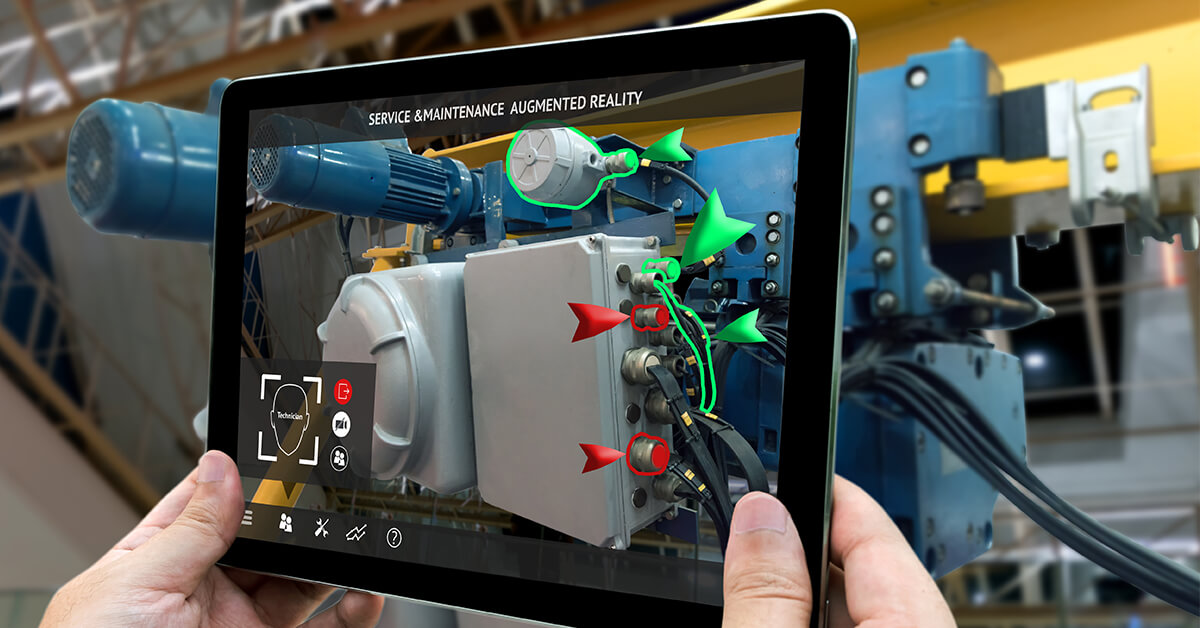3 Risks Augmented Reality Based Remote Assistance Companies Don't Mention
No risk, no reward. You’ve likely heard that saying before, and while there is truth to it, I would counter it with a second saying: No calculated risk, no reward. After all, you need to know if the reward you can get is worth the risk you’re undertaking. If you haven’t examined the risks of augmented reality-based remote assistance, you might be sending your customer support efforts skydiving without a backup parachute.
You know you need to take steps to keep your customer support tools and technology modern and practical. Augmented reality-based remote support tools have come to the forefront since the COVID-19 lockdowns. This solution might be just what your business needs to level up your customer experience… but it’s still not a leap you should take without understanding the risks.
Let’s examine three risks of implementing augmented reality-based remote assistance for your business—and how to counter them.
What Is Augmented Reality Based Remote Assistance?
Before diving into the risks of augmented reality-based remote assistance, let’s first establish what this type of remote assistance entails.
Augmented reality-based remote assistance tools allow a customer support agent or technician to use augmented reality features like on-screen text and collaborative pointers to guide a customer through a support issue remotely. These tools interact with the customer’s environment via their mobile device camera or devices like Smart Glasses.
Blitzz’s remote video support tool incorporates augmented reality features, so we’ve seen the benefits firsthand. We have also familiarized ourselves with the associated risks in the effort to shield our customers from their effects. Let’s go over the three primary risks associated with augmented reality based remote assistance and how to counter them.
1. Overstimulation
One risk of using augmented reality cx tools in remote video support calls is overstimulation. Using augmented reality to put text, pointers, or other visuals on the screen can help guide a customer through a complicated situation. However, if you’re adding too many visuals to the screen, you risk distracting your customer from the purpose of the call.
These issues become more problematic when your user wears VR goggles or Smart Glasses rather than using their phone camera viewfinder. In cases like these, going overboard with AR features on a call can cause sensory conflict for the user, resulting in symptoms like dizziness or nausea.
In other words, if your augmented reality-based remote assistance overstimulates your customer, the best-case scenario is that they will be overwhelmed and unable to follow your instructions. The worst-case scenario is that sensory conflict contributes to a loss of equilibrium, putting your customer at risk for falls and injury.
How To Combat Overstimulation
The best way to combat overstimulation while still enjoying the benefits of augmented reality for remote video support is to use AR cues sparingly.
Train your support agents and technicians to use pointers and text cues only when necessary. Additionally, have processes to ensure your staff remembers to clear the screen of any unnecessary marks as soon as they are no longer needed.
These simple steps will help you avoid overstimulating customers with augmented reality in video calls.
2. Security & Privacy Concerns
You may find that some of your customers have security or privacy-related concerns regarding the use of augmented reality in remote assistance. One of the most significant concerns regarding augmented reality for many people is facial recognition. Still, your tool may access data related to building layouts, machine part numbers, and more depending on your usage.
Related Read: Reviewing the 6 Top Remote Support Software Options
Customers concerned about privacy and security worry that a data breach could allow a bad actor to access this information and more, possibly causing damage to their company—or themselves, in the case of facial recognition data—long-term.
How To Combat Security & Privacy Concerns
The best way to put your customers’ minds at ease regarding security and augmented reality is to mindfully and carefully assess the vendor providing your AR-based tool. Research your vendor’s history concerning previous breaches or security issues. Once you’ve completed this research and selected a vendor with an incredible security record, you’ll be able to provide that proof to concerned customers, ensuring them their data is safe.
Additionally, you should conduct background screenings for all employees with access to AR features in your organization.
3. Cost of Implementation
The last risk of implementing augmented reality-based remote assistance is the cost of implementing such a solution. Augmented reality-based tools can be expensive, but it’s not just the price tag you need to consider.
Implementing an augmented reality tool requires staff training. Additionally, you will need to establish processes and procedures for the appropriate use of your new tool. These processes can be time-consuming and expensive in terms of work hours.
Related Read: How Much Does Remote Customer Service Tech Cost?
The high cost of implementation can eat into your bottom line, but even worse, it can motivate you to make a decision based purely on price when it comes to your tool. The result? You waste your time and money implementing a less-than-effective tool just to save a few dollars upfront.
How To Combat the Cost of Implementation
It may sound counterintuitive, but to combat high implementation costs, you don’t want to choose the tool with the lowest price tag: You’ll want to select the tool that will be easiest for your team to adopt.
By selecting a high-quality, user-friendly tool like Blitzz, you’ll save money in the long run by keeping customers happy (which means they’ll keep coming back). Additionally, your team can be up and running on Blitzz within a few hours—no long, drawn-out training sessions are required.
Augmented Reality Based Remote Assistance Done Right
Like any solution, augmented reality-based remote assistance comes with risks attached. While you shouldn’t ignore these risks, you also shouldn’t discount the use of augmented reality tools for customer service. As long as you take steps to counter the risks discussed above, you and your team can reap the benefits of AR-based support.
The benefits of augmented reality-based remote assistance include:
- increased first-call resolution rates
- increased customer satisfaction
- increased technician and support agent efficiency
- and more!
Blitzz offers a top-of-the-line remote video support tool equipped with augmented reality capabilities. Our one-click support platform is easy to use for support agents and customers alike. To see the benefits of Blitzz for yourself, schedule a free test drive today!




